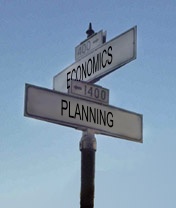Using Memphis-themed artwork to create a sense of place
The Memphis metropolitan area lags behind peer cities in several key benchmarks of administrative and economic development concern: population growth, job growth, and educational attainment of citizens. Economic development efforts often focus on luring manufacturing jobs through infrastructure improvements and tax incentives and the Memphis area has had mild success in that regard. Other local efforts have focused on physical structural improvements through the development of libraries, convention centers, arenas, stadiums, and museums, and again, Memphis has arguably reaped the benefits of these investments. However, quality of life concerns tend to be more of a political issue than an economic development tool and this has hindered Memphis’s growth opportunities, reduced the return on its infrastructure and capital investments, and made the metropolitan area less competitive than peer cities like Nashville, Austin, and Jacksonville.
A good quality of life is integral to attracting and maintaining a qualified and vibrant workforce, which in turn invites potential employers and stimulates the economy. It also encourages homegrown talent and intellect to remain in Memphis and invest themselves locally. Memphis’s efforts at capitalizing on its cultural, physical, geographical, and historical uniqueness to improve residents’ quality of life have been underwhelming at best and nonexistent at worst. Memphis is a unique city in many ways, but it is not unique in the fact that it must adapt itself to attract economic development by promoting a quality place talented individuals desire. Clearly the failure of manufacturing cities like Detroit, Cleveland, and St. Louis – cities not too unlike Memphis – should be a harbinger of things to come if Memphis does not seriously consider its duty to encourage, attract, and retain talent through investments aimed at enhancing the area’s quality of life.
A globally competitive city does three things: they protect their glowing reputation, they differentiate themselves, and they meet the needs of their citizens (Pooley 2005). Toronto, Ontario understands that formula by investing directly and indirectly in cultural activities that both differentiates the city and helps meet the needs of their citizens. Investing in public space artwork, public amenities, and cultural and creative outlets, they see a $3.20 return in economic activity for each $1 invested (Pooley 2005). Cultural investments that acknowledge and respect the culture of the city become investments by the residents. “Cities have the capability of providing something for everybody only because, and only when, they are created by everybody,” (Curtis 2006). This inclusive approach involves members of the community creating the streets and neighborhoods of their city to mirror themselves, their values, and their culture. Many cities have undertaken projects to make their streetscapes “more enticing, thereby adding to the quality of hidden places,” because they understand that attractive streets strengthen the neighborhoods they connect, and a city’s neighborhoods are the defining units of that city (Curtis 2006).
What would be useful, therefore, is a way to create public art that improves the streetscape, strengthens the neighborhoods around it, and creates a city “brand” for Memphis. Many existing city-owned facets of public life are prime candidates for works of public art. University of Memphis art students, alumni, and other area artists could easily be commissioned to develop artwork, murals, or sculptures that reflect the Memphis culture and adhere to a theme reflecting something unique about the city. This art would then be placed at noticeable and heavily trafficked locations, both public and private, and would communicate to passersby that Memphis is a unique place that is different from other cities, knows itself, is proud of itself, and has something to offer everyone. Many other cities already have a similar program in place - Anchorage, Alaska dots its downtown with grizzly bear sculptures; New Orleans, Louisiana uses the fleur de lis symbol; and Omaha, Nebraska (naturally!) uses "O!" to represent its tagline, "O! So Surprising". Each city gives its artists creative license to develop the sculpture, but still remain true to the overall desired theme.
Anything Memphis can do to create a unique and viable brand that is not a cotton boll, a riverboat, or Elvis would be arguably useful in creating a place that talented people and employers want to be. And anything Memphis can do to strengthen its neighborhoods, aesthetically improve its streetscapes, and help residents have a reason to be proud of Memphis is something all city leaders should aspire to.
Subscribe to:
Post Comments (Atom)

1 comment:
I always thought that what drove people to Memphis was Elvis and the entertainment. I think Memphis already has what most people may consider attracting to talented people such as a Zoo, Libraries, Museums and Upper class Malls and Theaters and night clubs. For art, we have the Pyramid. It has worked as a symbol of Memphis for years.
Personally, I don't see why people wouldn't want to settle in Memphis. I think Memphis is overqualified as a globally competitive city. As for crime, we need an Alcatraz.
Post a Comment